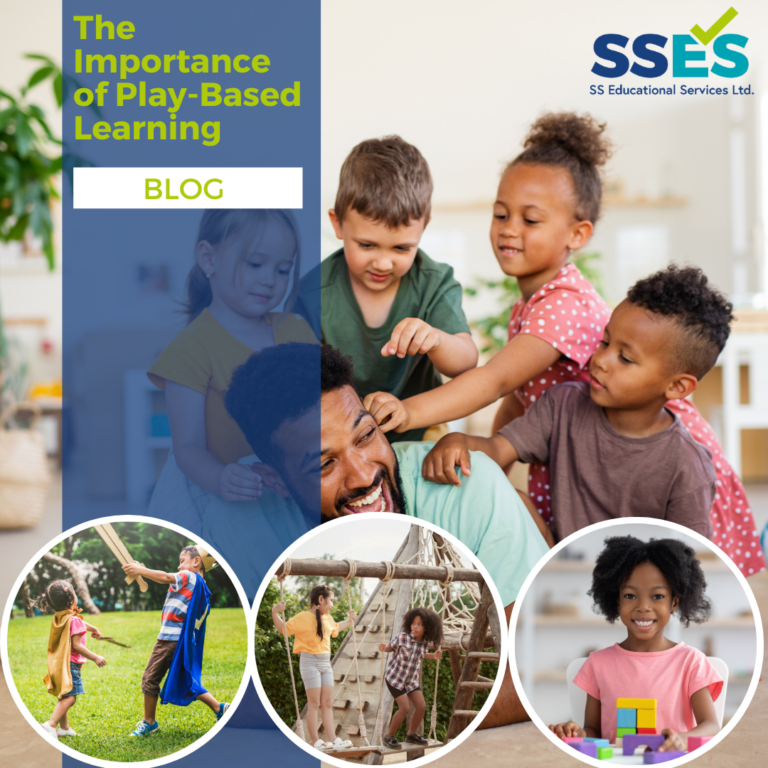The Importance of Play-Based Learning for Children’s Development in the Early Years
In the early years, play is not just a fun activity but an essential component of children’s learning and development. Play allows children to explore the world around them, develop their imagination and creativity, and build social skills and emotional resilience. As early years educators, it is crucial to understand the different types of play and their applications in promoting children’s learning and development.
What is Play-Based Learning? Play-based learning is an approach to early childhood education that involves using play as a tool for learning. It is a child-centred approach that values the child’s natural curiosity and desire to learn through exploration and discovery. Play-based learning can take many forms, from structured activities to unstructured free play. It can be indoor or outdoor, solitary or social, and can involve physical, sensory, imaginative, or cognitive experiences.
Examples of Play-Based Learning in the Early Years
Physical Play: Physical play involves using the body to engage in gross motor activities such as climbing, jumping, running, and balancing. These activities help children develop their coordination, balance, strength, and spatial awareness. Examples of physical play include outdoor play in the park or playground, obstacle courses, dancing, and sports.
Sensory Play: Sensory play involves using the senses to explore and experiment with different materials, textures, smells, and tastes. Sensory play helps children develop their cognitive, social, and emotional skills, as well as their sensory awareness. Examples of sensory play include water play, sand play, playdough, painting, and exploring natural materials such as leaves and flowers.
Imaginative Play: Imaginative play involves using the imagination to create stories, characters, and scenarios. Imaginative play helps children develop their language, literacy, and social skills, as well as their creativity and problem-solving abilities. Examples of imaginative play include role-playing, dressing up, puppetry, and storytelling.
Construction Play: Construction play involves using blocks, bricks, and other materials to build structures, towers, and models. Construction play helps children develop their spatial awareness, problem-solving, and collaboration skills. Examples of construction play include building blocks, Lego, Duplo, and other construction toys.
Applications of Play-Based Learning in Early Years Education
Play-based learning has numerous applications in early years education. It can be used to support children’s social, emotional, cognitive, and physical development, as well as their language and literacy skills. Here are some examples of how play-based learning can be applied in early years education:
Structured Play Activities: Structured play activities are designed to promote specific skills or concepts, such as counting, matching, sorting, or problem-solving. These activities can be incorporated into lesson plans or used as standalone activities. For example, a teacher might use a counting game with blocks to teach children to count to ten.
Unstructured Free Play: Unstructured free play is an important component of early years education. It allows children to follow their own interests and explore their environment in their own way. Unstructured play can take place indoors or outdoors, and can involve a range of materials and activities.
Learning Through Play: Learning through play involves using play as a tool for learning. For example, a teacher might use a puppet show to teach children about different emotions, or a sand table to explore different textures and materials.
Play-based learning is a vital aspect of early years education. It allows children to learn through exploration, experimentation, and discovery, and helps them develop their cognitive, social, emotional, and physical skills. As early years educators, it is our responsibility to create a supportive and stimulating environment that encourages children to engage in play-based learning. By using a range of play-based learning activities, we can support children’s development and prepare them for lifelong learning. As early years educators, we should strive to create a warm, safe, and uplifting learning environment that promotes play-based learning and encourages children to explore, create, and learn. By doing so, we can help children develop a love of learning and set them on a path to success in their future academic and personal endeavours.


